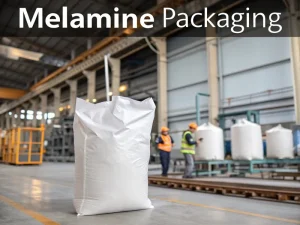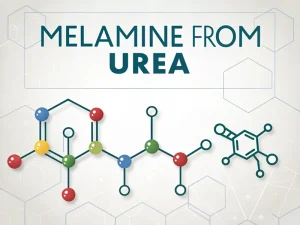
Melamine Packaging
Tech Blog Melamine packaging For manufacturers, inaccurate packaging not only fails to meet national standards but also increases labor costs and the risk of product

If you have ever browsed the ingredient list for moisturizers, foot creams, or eczema treatments, you may have noticed the “urea” near the top. But why are these compounds-better known as fertilizers or industrial chemicals-so common in skincare products? The answer is simple: urea is good for skin, with a range of benefits from deep hydration to treating stubborn dryness.
So, what exactly is urea in skincare products? How did it become a “savior” for dry and rough skin?
First and foremost, the urea you see in face cream, lotion, or ointment is synthesized in the laboratory. It is pure, sterile, and safe, which is different from urea in living organisms. Its application in skincare products has a history of several decades and has been supported by extensive scientific research.
What’s even more interesting is that urea itself is an important component of our skin’s natural moisturizing factor (NMF). This means that our skin naturally produces a small amount of urea to maintain its moisture and health. Therefore, the use of urea in skincare products supplements the skin with the key substance it already needs.
The reason why urea is known as an “all-around player” is that it can play two key roles at the same time, depending on its concentration: an excellent moisturizing agent and a mild exfoliating agent.
At lower concentrations (usually below 10%), urea is a top-notch moisturizer.
Strong water absorption and locking: Similar to the well-known hyaluronic acid (hyaluronic acid), urea can absorb moisture from the environment and deep layers of the skin. But its uniqueness lies in its ability to alter the structure of skin proteins, enhance the skin’s water-locking ability, and prevent water loss.
Repairing the skin barrier: Urea can help maintain healthy skin barrier function. A strong barrier means that the skin is better able to resist external stimuli, reducing sensitivity and inflammation.
At higher concentrations (usually above 10%), urea exhibits its “keratolytic” properties.
Gentle decomposition of dead skin: It can gently decompose the protein that binds dead skin cells together, promoting the natural shedding of dead skin cells without causing tearing and irritation like physical sanding.
Softening rough skin: This exfoliating effect can significantly improve the texture of the skin, making it smooth, soft, and enhancing the absorption of subsequent skincare products.
Understanding the concentration of urea is key to its effective use.
Low concentration (<10%): mainly used for moisturizing and nourishing. Very suitable for use in facial moisturizers and daily body lotion, replenishing moisture for dry, dehydrated, or sensitive skin.
Medium concentration (10% -20%): It has both strong moisturizing and mild exfoliating functions. This is an ideal choice for treating “chicken skin” (keratosis), extremely dry elbows, knees, and feet.
High concentration (>20%): mainly used as a potent keratin softener and usually used for local treatment, such as softening thick calluses on the soles of the feet, smoothing dry and cracked heels, or treating thick scales related to psoriasis.
Almost all skin types can benefit from urea, but the following groups will particularly discover its wonders:
Dry and extremely dry skin: Urea can provide immediate and long-lasting moisturizing effects.
Eczema and Psoriasis patients: It can help alleviate dryness, itching, and flaking, and repair damaged skin barriers.
Patients with chicken skin keratosis: The exfoliating function of urea can effectively smooth out rough bumps on the arms and thighs.
Heel dryness and callus sufferers: High-concentration urea cream is a powerful tool for softening and repairing foot skin.
Mature skin: As age increases, the natural urea content of the skin decreases, and supplementing urea helps maintain the skin’s hydration and softness.
In summary, the answer to the question “urea is good for skin” is a resounding “yes”.
It is a scientifically validated multifunctional ingredient that is highly compatible with the skin. It can deeply hydrate and gently renew skin texture, while also strengthening our skin’s first line of defense.
Whether you need a daily moisturizer or targeted treatment for calluses, urea-based products can provide significant effects without irritation. By selecting the appropriate concentration for your skin type, you can harness the power of this natural ingredient to keep your skin healthy, smooth, and radiant.

Tech Blog Melamine packaging For manufacturers, inaccurate packaging not only fails to meet national standards but also increases labor costs and the risk of product

Tech Blog How to Detect Melamine in Textiles? Melamine powder, a nitrogen-containing heterocyclic compound, is widely used in flame-retardant textiles and plastic products due to

Tech Blog melamine from urea Melamine is well-known for its wide range of applications, but its raw material for production is surprisingly urea. For manufacturers,

JINGJIANG MELAMINE POWDER
© JINJIANG MELAMINE